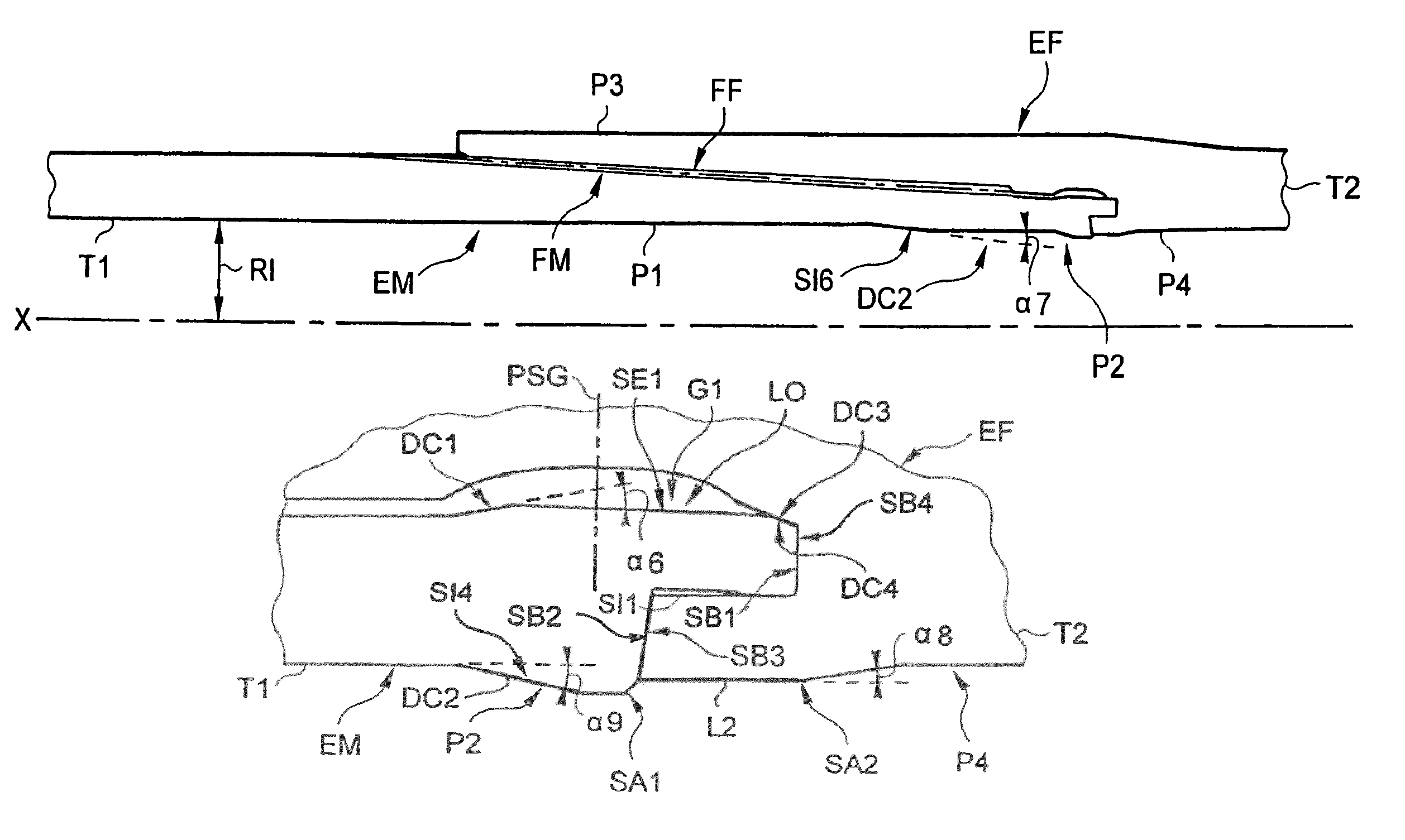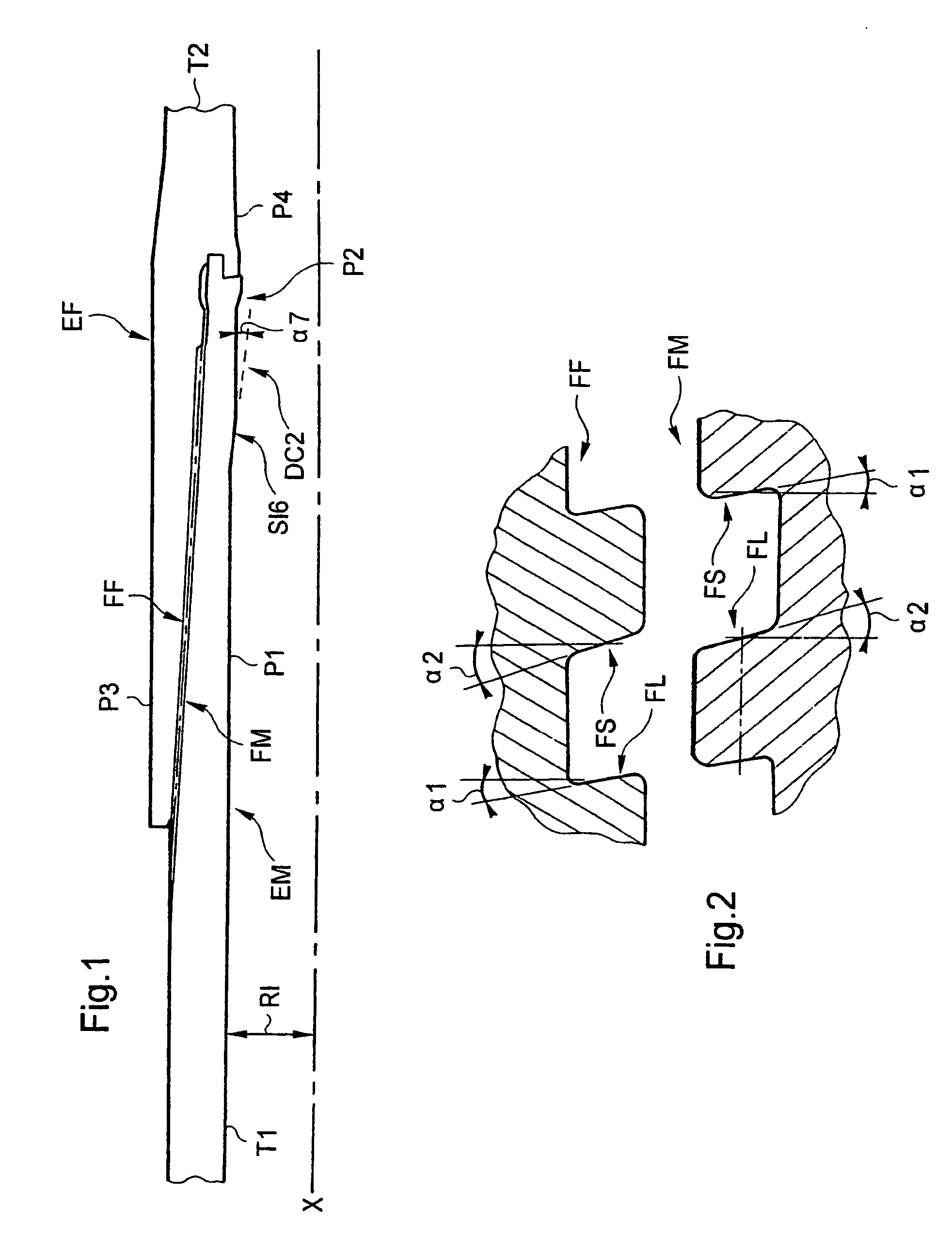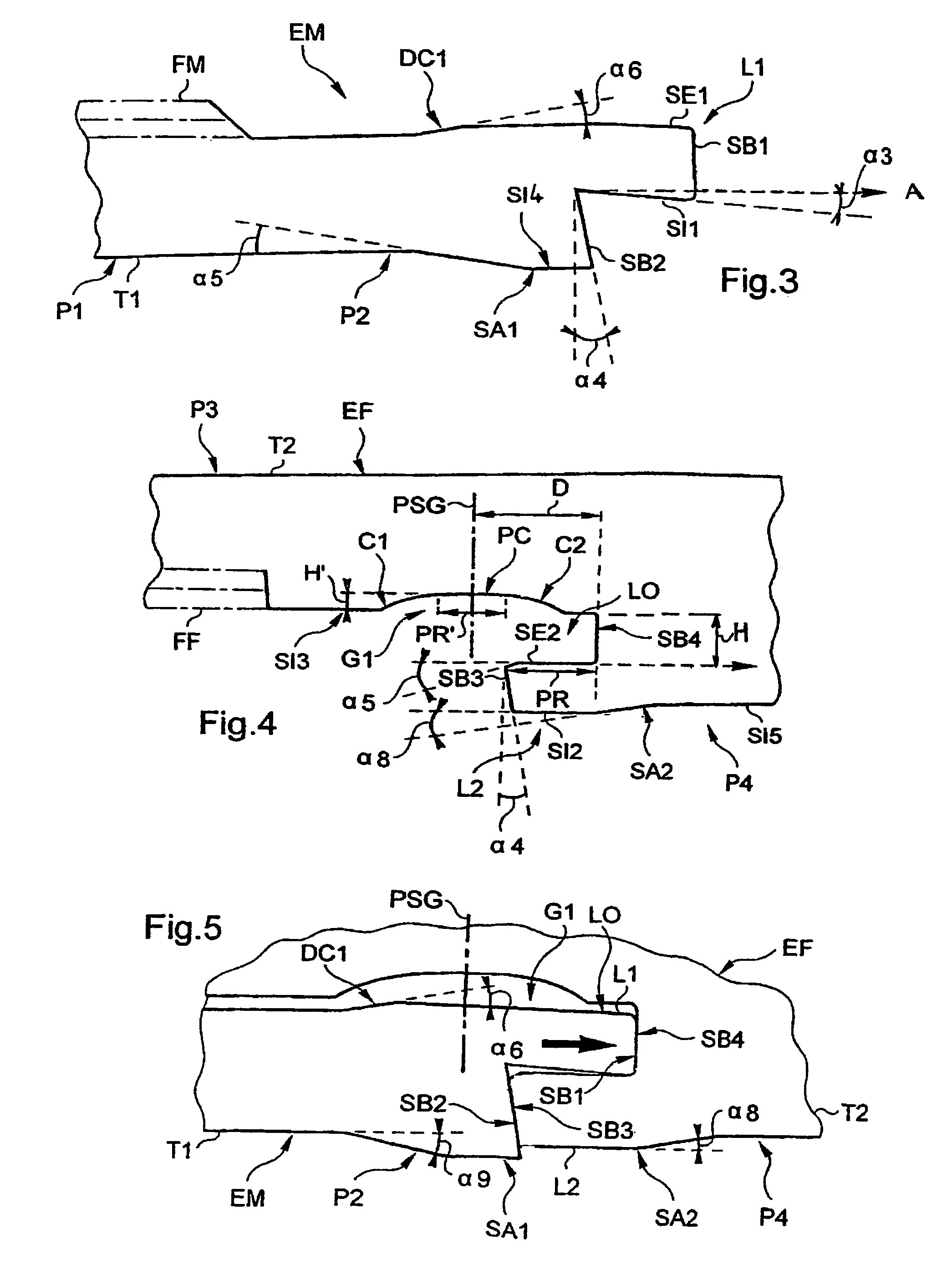Sealed tubular joint comprising local and initial added thickness(es) by means of plastic expansion
a tubular joint and expansion technology, applied in the field of tubular joints, can solve the problems of insufficient sealing characteristics of threaded joints of this type, insufficient gas tightness of joints, and insufficient sealing characteristics of joints, so as to achieve high expansion rates and improve the effect of situation
- Summary
- Abstract
- Description
- Claims
- Application Information
AI Technical Summary
Benefits of technology
Problems solved by technology
Method used
Image
Examples
first embodiment
[0058]Reference will firstly be made to FIG. 1 to 8 in order to describe a tubular joint according to the invention. In this example, as is partially illustrated in FIG. 1, the joint allows the connection of two tubes T1 and T2, having an axis XX generated by revolution and being of great length i.e. several meters long, and more specifically of the male-type end EM (or male tubular element) of a first tube T1 and the female-type end EF (or female tubular element) of a second tube T2. In the illustrated embodiment, the tubes T1 and T2 have, for example, a common portion, the initial outer diameter of which is equal to approximately 193.68 mm (or 7⅝″). The common portion of a tube is the central portion remote from its two ends and having a substantially constant diameter.
[0059]As is illustrated in FIG. 1, the male end EM of a tube T1 comprises two portions P1 and P2. The first portion P1 extends the central portion of the tube T1 and is provided with an outer male thread FM, prefera...
second embodiment
[0120]The second abutment surface SB2 and the third abutment surface SB3 still initially have conical surfaces having substantially identical selected angles of inclination α4 relative to a plane perpendicular to the longitudinal direction A. However, in this second embodiment, the conical surfaces of the second abutment surface SB2 and third abutment surface SB3 are concave and convex respectively.
[0121]The inclinations of the angles α4 are selected such that the second abutment surface SB2 rests against the third abutment surface SB3, generating the first radial and sealing interference contact of the first outer surface SE1 (of the first lip L1) against the third inner surface SI3.
[0122]Preferably, as illustrated in FIG. 10 to 12, the second SB2 and third SB3 abutment surfaces have substantially the same initial inclination. This common inclination is preferably between an angle α4 of approximately +5° and an angle α4 of approximately +30°. More preferably still, it is equal to a...
PUM
 Login to View More
Login to View More Abstract
Description
Claims
Application Information
 Login to View More
Login to View More - R&D
- Intellectual Property
- Life Sciences
- Materials
- Tech Scout
- Unparalleled Data Quality
- Higher Quality Content
- 60% Fewer Hallucinations
Browse by: Latest US Patents, China's latest patents, Technical Efficacy Thesaurus, Application Domain, Technology Topic, Popular Technical Reports.
© 2025 PatSnap. All rights reserved.Legal|Privacy policy|Modern Slavery Act Transparency Statement|Sitemap|About US| Contact US: help@patsnap.com



